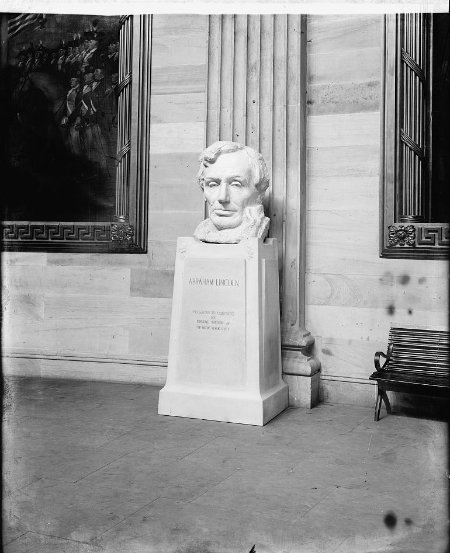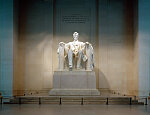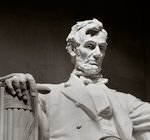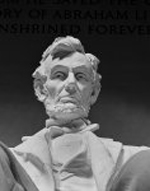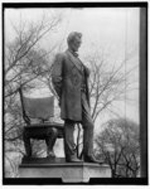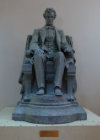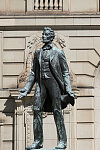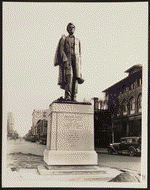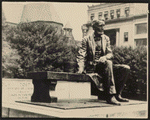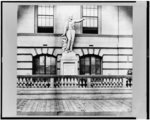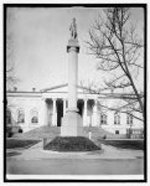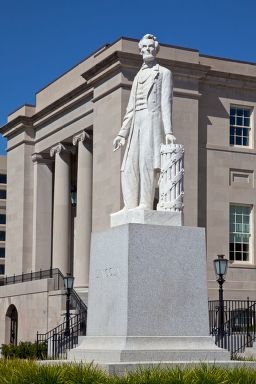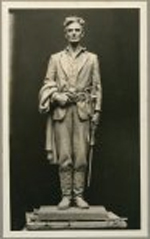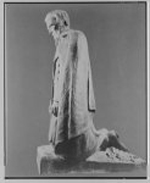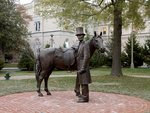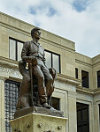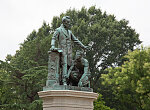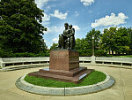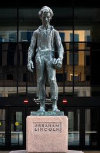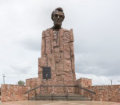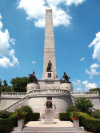Learning from the Source: The Art of Tribute
From the Library of Congress bicentennial exhibition—With Malice Toward None—we learn a bit about the profound effect Abraham Lincoln’s death had on people all over the world.
The assassination of President Abraham Lincoln on Good Friday, April 14, 1865, had a tremendous impact both in the United States and abroad. People in Great Britain, which had favored the South, mourned as if Lincoln had been their leader. France, whose citizens had made no secret of their sympathy for the Union, paid tribute in verse and song. All eyes were on this struggling American democracy, so aptly personified in the person of Abraham Lincoln, and the world mourned his passing.
The pursuit of the assassin, John Wilkes Booth, was one of the most extensive manhunts ever mounted by the United States government. The search lasted twelve days, by which time the body of President Lincoln, transported by rail on a thirteen-day journey to Springfield, Illinois, for burial, was half way to its resting place. Unending crowds of mourners lined the tracks between Washington and Springfield to pay their final respects to the martyred President Abraham Lincoln.
Over time, numerous monuments to Abraham Lincoln were built. Merriam-Webster’s Online Dictionary defines monument as: “a lasting evidence, reminder, or example of someone or something notable or great”. What more can you learn about Lincoln, his character and his achievements by analyzing these works of art? Who is worthy of a monument?
Work in a group to analyze at least six Lincoln statues (see below) by answering the questions below, then discuss your learning from the analyses.
- How did the artist feel about Lincoln? Use details from the work to provide support for your reasoning.
- Who do you think was the audience for this work? Use details from the work and the bibliographic record to support your response.
- What is the role of place in the Lincoln sculptures?
- What aspects of Lincoln’s charter or his achievements does the work highlight? Do you think these are the most significant aspects of Lincoln’s character or achievements? Explain your conclusions.
- Do you think the statue is an appropriate memorial to Lincoln? Use details from the work to provide support for your viewpoint.
- How does the addition of people to these photos of Lincoln monuments affect how you view the sculpture tributes?
Research and evaluate the building of historical statues and monuments in the United States by reading the texts linked to below and considering the questions that follow.
- Of Historical Statues And Monuments Huffington Post August 19, 2017
- Section 1, section 3 introduction and subsections (c)(i) through (c)(vi), Executive Order on Building and Rebuilding Monuments to American Heroes July 3, 2020
Reflect on your learning by answering the questions below, then sharing your thoughts with your group.
- What types of people deserve monuments?
- What qualities should these people possess?
- What contributions are worthy of a memorial tribute?
- Do you agree with the suggestions and selections of the people mentioned in relation to the National Garden of American Heroes? Why or why not?
Individually, create a drawing or small prototype of a statue of someone to be installed in the National Garden of American Heroes and include a plaque that identifies the person and briefly (no more than 280 characters, including spaces) and succinctly describes the purpose or reasoning behind the monument. Alternatively, you may write a short op-ed (no more than 400 words) against the construction of the National Garden of American Heroes. In either case, share what you created with your congressional representative.
Statues
Project resources
- Elements And Principles Of Sculptural Design Encyclopaedia Britannica
- Seven Steps to a Strong Opinion Poynter Institute
- Learning from the Source: Abraham Lincoln & Me Activity Book
- Learning from the Source: Monumental Men
- Learning from the Source: Putting Loss into Words.
- Point of View in Statues of Abraham Lincoln: Three Looks at a Leader – A Primary Source Starter
- Teaching Now: Using Primary Sources to Create a Lincoln Assassination Newscast

